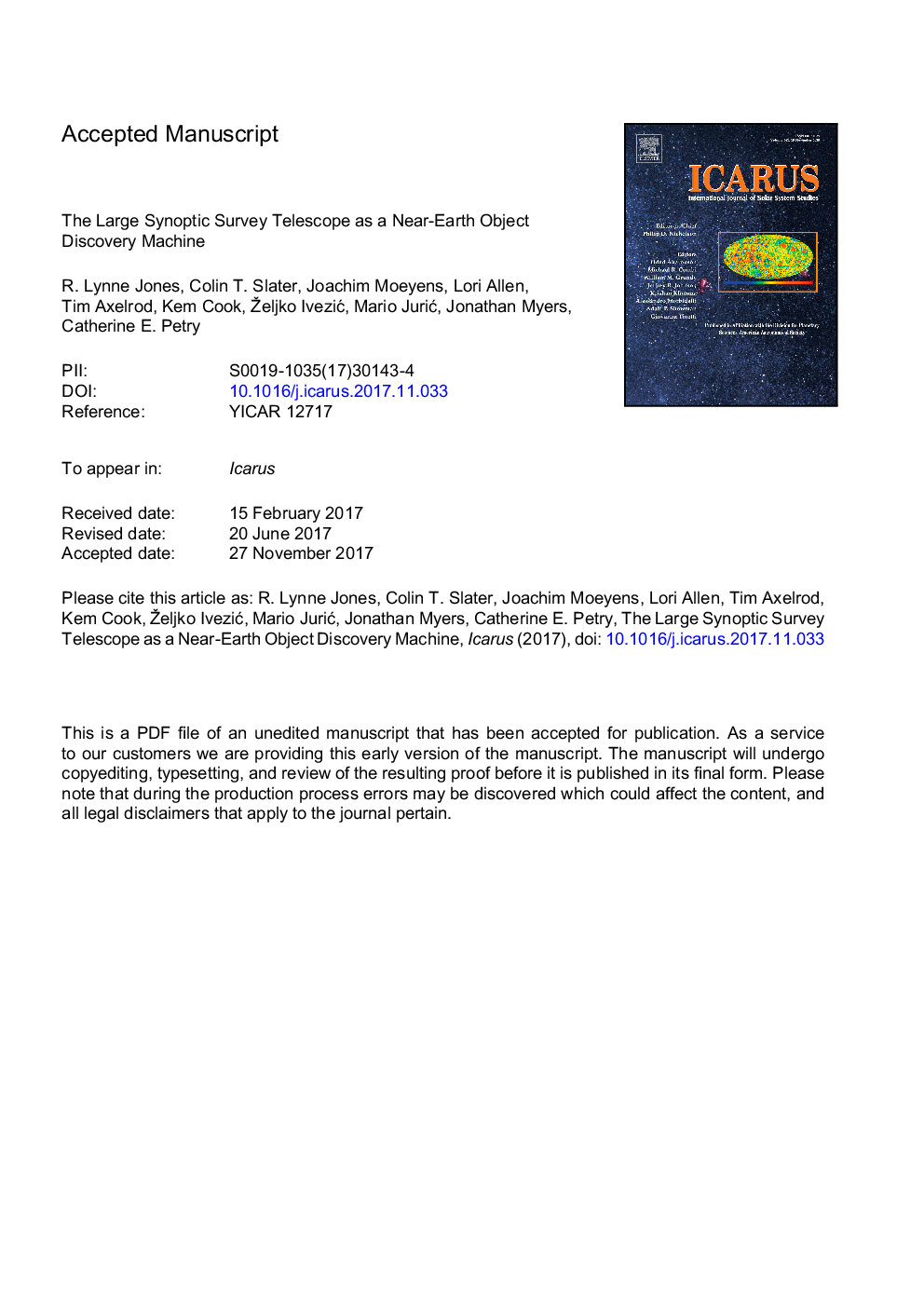| کد مقاله | کد نشریه | سال انتشار | مقاله انگلیسی | نسخه تمام متن |
|---|---|---|---|---|
| 8134434 | 1523488 | 2018 | 68 صفحه PDF | دانلود رایگان |
عنوان انگلیسی مقاله ISI
The Large Synoptic Survey Telescope as a Near-Earth Object discovery machine
ترجمه فارسی عنوان
تلسکوپ بزرگ نظارت تصویری به عنوان یک دستگاه کشف شیء نزدیک به زمین
دانلود مقاله + سفارش ترجمه
دانلود مقاله ISI انگلیسی
رایگان برای ایرانیان
کلمات کلیدی
اشیاء نزدیک به زمین، پردازش تصویر، سیارک ها،
موضوعات مرتبط
مهندسی و علوم پایه
علوم زمین و سیارات
علوم فضا و نجوم
چکیده انگلیسی
Using the most recent prototypes, design, and as-built system information, we test and quantify the capability of the Large Synoptic Survey Telescope (LSST) to discover Potentially Hazardous Asteroids (PHAs) and Near-Earth Objects (NEOs). We empirically estimate an expected upper limit to the false detection rate in LSST image differencing, using measurements on DECam data and prototype LSST software and find it to be about 450 degâ2. We show that this rate is already tractable with current prototype of the LSST Moving Object Processing System (MOPS) by processing a 30-day simulation consistent with measured false detection rates. We proceed to evaluate the performance of the LSST baseline survey strategy for PHAs and NEOs using a high-fidelity simulated survey pointing history. We find that LSST alone, using its baseline survey strategy, will detect 66% of the PHA and 61% of the NEO population objects brighter than H=22, with the uncertainty in the estimate of â¯Â±â¯5 percentage points. By generating and examining variations on the baseline survey strategy, we show it is possible to further improve the discovery yields. In particular, we find that extending the LSST survey by two additional years and doubling the MOPS search window increases the completeness for PHAs to 86% (including those discovered by contemporaneous surveys) without jeopardizing other LSST science goals (77% for NEOs). This equates to reducing the undiscovered population of PHAs by additional 26% (15% for NEOs), relative to the baseline survey.
ناشر
Database: Elsevier - ScienceDirect (ساینس دایرکت)
Journal: Icarus - Volume 303, 15 March 2018, Pages 181-202
Journal: Icarus - Volume 303, 15 March 2018, Pages 181-202
نویسندگان
R. Lynne Jones, Colin T. Slater, Joachim Moeyens, Lori Allen, Tim Axelrod, Kem Cook, Željko IveziÄ, Mario JuriÄ, Jonathan Myers, Catherine E. Petry,
